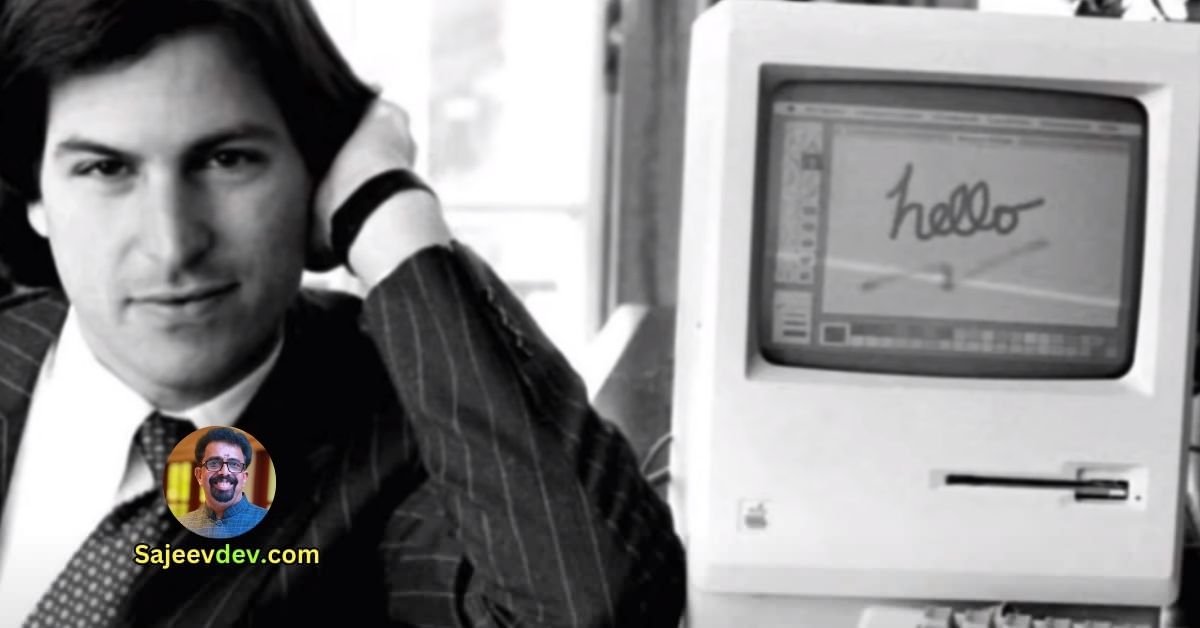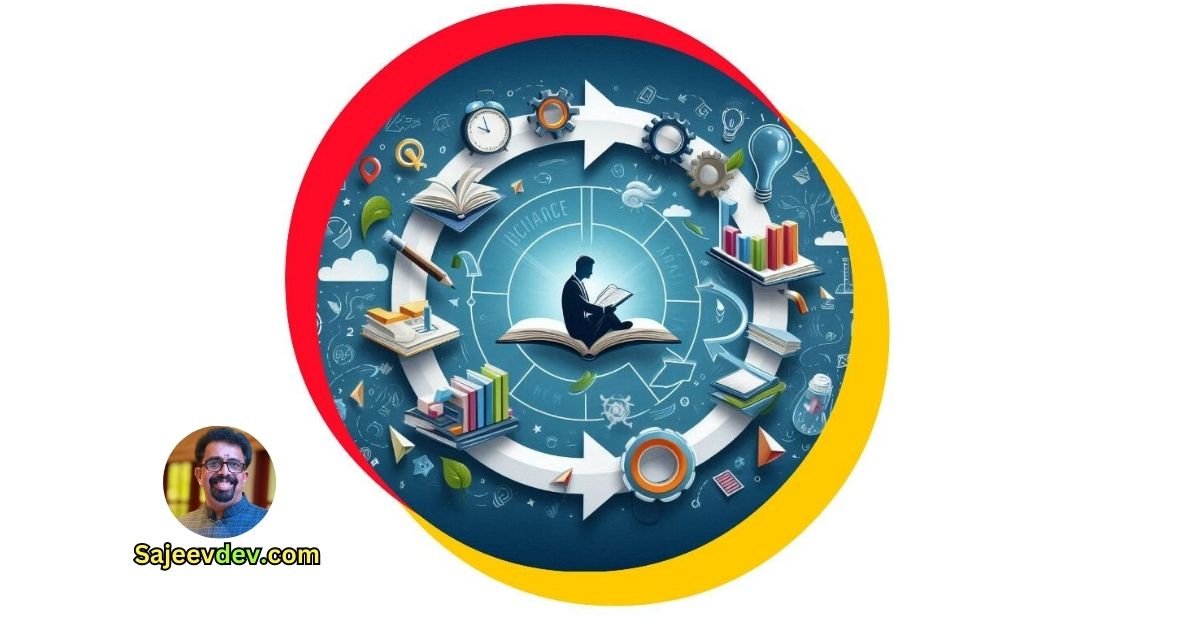The Man Behind the Apple
Steve Jobs, the co-founder of Apple Inc., is a name synonymous with innovation and design excellence. As a visionary leader, Jobs not only revolutionized the tech industry but also redefined how we interact with technology in our daily lives. His unique ability to foresee and shape the future of technology transformed Apple from a garage start-up into one of the most valuable companies in the world.
Jobs’ journey is a testament to his relentless pursuit of perfection and his unwavering commitment to pushing the boundaries of what is possible. Known for his keen eye for design and his obsession with user experience, he played a pivotal role in the creation of groundbreaking products such as the iPhone, iPad, and MacBook. These innovations not only set new standards in the tech industry but also influenced various other sectors, proving the far-reaching impact of his work.
Steve Jobs’ approach to business and product development was characterized by a blend of creativity, intuition, and rigorous attention to detail. His ability to envision the future needs of consumers and deliver products that resonated with them on a profound level is a key lesson for entrepreneurs and business leaders. The principles and strategies he employed are not just applicable to the tech industry but can serve as a guiding light for anyone looking to innovate and excel in their respective fields.
This blog will delve into the various facets of Steve Jobs’ journey, exploring the lessons we can learn from his successes and failures. By understanding the methodologies and philosophies that drove his achievements, we can glean valuable insights into how to unleash our own inner visionary and drive our ventures towards greatness. Join us as we embark on this exploration of Steve Jobs’ legacy and the timeless wisdom he left behind.
The Power of Vision: Envisioning the Future
Steve Jobs possessed an extraordinary ability to envision the future, a quality that set him apart as a true visionary. His foresight was not merely about predicting technological trends but about reimagining the world and the role technology could play within it. This vision became the driving force behind some of the most revolutionary products of our time.
One of Jobs’ earliest triumphs was the development of the Macintosh. Introduced in 1984, the Macintosh was more than just a computer; it was a harbinger of the personal computing revolution. Jobs envisioned a future where technology was accessible to everyone, not confined to the realm of experts. The Macintosh’s user-friendly interface and innovative design turned that vision into a reality, democratizing computing.
Jobs’ vision continued to manifest with the creation of the iPod in 2001. He anticipated a world where digital music could be easily carried and accessed, transforming how people interacted with their music libraries. The iPod didn’t just change the way music was consumed; it revolutionized the entire music industry, leading to the decline of physical media and the rise of digital downloads.
The iPhone, introduced in 2007, further exemplified Jobs’ visionary prowess. He foresaw a future where mobile phones were more than communication devices—they were powerful, multifunctional tools that integrated seamlessly into daily life. The iPhone’s touch interface, app ecosystem, and sleek design set new standards, propelling the smartphone era.
Finally, the iPad, launched in 2010, showcased Jobs’ unwavering commitment to pushing boundaries. He imagined a device that bridged the gap between smartphones and laptops, offering a new way to consume and create content. The iPad’s success demonstrated that Jobs’ vision was not only innovative but also commercially viable.
Having a strong vision is crucial for guiding efforts and inspiring others. It involves dreaming big and not being afraid to pursue seemingly impossible goals. Jobs’ journey underscores the importance of envisioning the future, as it empowers individuals to innovate, challenge norms, and ultimately, change the world.
Relentless Pursuit of Excellence: Setting High Standards
Steve Jobs’ journey to business greatness is punctuated by his relentless pursuit of excellence and an unwavering commitment to setting high standards. Jobs’ obsession with perfection was not merely a personal quirk but a driving force behind Apple’s unprecedented success. His insistence on the seamless integration of hardware and software is a testament to his dedication. Jobs believed that the user experience should be intuitive and flawless, leading to the revolutionary design and functionality of Apple products.
One notable example of Jobs’ high standards is the development of the original iPhone. Jobs and his team faced numerous challenges in creating a device that combined a phone, an iPod, and an internet communicator into one. Yet, Jobs’ vision for an impeccably designed product pushed them to overcome these obstacles. The result was a device that not only met but exceeded user expectations, setting a new benchmark in the industry.
Another example is the immaculate design of Apple’s physical products. Jobs was known for his attention to detail, from the packaging to the internal components that consumers never see. He famously said, “When you’re a carpenter making a beautiful chest of drawers, you’re not going to use a piece of plywood on the back, even though it faces the wall and nobody will ever see it.” This philosophy extended to every aspect of Apple’s products, ensuring that they were not only functional but also aesthetically pleasing.
Setting high standards and consistently striving for excellence can significantly differentiate one’s work. Jobs’ commitment to these principles helped build a legacy that continues to influence the tech industry today. By maintaining rigorous standards, individuals and businesses can achieve remarkable quality, fostering consumer trust and loyalty. In essence, the relentless pursuit of excellence can transform ordinary efforts into extraordinary achievements, creating lasting impacts and setting new standards in any field.
Innovation Through Simplicity: The Art of Focus
Steve Jobs’ philosophy of simplicity and focus stands as a cornerstone of his approach to design and innovation. He believed that true innovation lies not in complexity but in the ability to strip away the unnecessary to reveal the essence of a product. Jobs famously said, “Simple can be harder than complex: You have to work hard to get your thinking clean to make it simple.” This philosophy is vividly embodied in the minimalist design of Apple products.
One of the most notable examples of this approach is the iPhone. When it was first introduced, it revolutionized the smartphone market with its sleek design and intuitive user interface. The iPhone eliminated the need for a physical keyboard, opting instead for a single button and a touch screen that allowed for a more seamless and user-friendly experience. This focus on simplicity extended to the operating system as well, where the user interface was designed to be intuitive and easy to navigate, making advanced technology accessible to everyone.
Another example is the MacBook, where Apple’s design team focused on creating a laptop that was not only powerful but also incredibly thin and light. By removing unnecessary components and focusing on what truly mattered, Apple was able to deliver a product that set new standards in the industry. The streamlined design and user-friendly interface made it a favorite among professionals and casual users alike.
Jobs’ emphasis on eliminating unnecessary complexities is not limited to product design; it extends to all aspects of work and life. He believed in focusing on a few important things and doing them exceptionally well. This principle can be applied universally, whether you are designing a product, managing a project, or organizing your personal life. By concentrating on what truly matters and removing distractions, one can achieve greater clarity, efficiency, and success.
In essence, Steve Jobs’ legacy teaches us that simplicity and focus are key drivers of innovation. By making complex technology simple and accessible, and by zeroing in on what is truly important, we can create meaningful and impactful solutions in our personal and professional lives.
Embracing Failure: Learning from Setbacks
Steve Jobs’ journey to business greatness was not a seamless ascent; it was punctuated by significant setbacks, the most notable being his ousting from Apple in 1985. This incident could have marked the end of his career. Instead, it became a pivotal moment of growth and transformation. Jobs’ departure from Apple, the company he co-founded, forced him to confront failure head-on. Rather than succumbing to despair, he utilized this period to reflect, innovate, and evolve both personally and professionally.
During his time away from Apple, Jobs founded NeXT, a computer platform development company, and acquired Pixar, which would later revolutionize the animation industry. These ventures were not just placeholders; they were crucial in shaping his visionary approach and technical prowess. NeXT’s technology eventually became integral to Apple’s operating systems, and Pixar’s success underscored Jobs’ ability to recognize and nurture creative potential.
Jobs’ return to Apple in 1997 marked the beginning of a new era. Armed with fresh insights and renewed determination, he led Apple to unprecedented heights, introducing iconic products such as the iMac, iPod, iPhone, and iPad. His journey underscores a vital lesson: setbacks can be transformative when approached with resilience and perseverance. Failure is often perceived negatively, but it can be a powerful catalyst for innovation and growth.
The key takeaway from Jobs’ experience is the importance of viewing failure as a stepping stone rather than a stumbling block. Embracing failure involves analyzing what went wrong, learning from the experience, and using those lessons to forge a path forward. Jobs’ ability to pivot and reinvent himself after setbacks illustrates the value of resilience. It is a testament to the idea that perseverance, coupled with a willingness to learn from mistakes, can turn apparent failures into remarkable comebacks.
Building a Strong Team: Leveraging Collective Genius
Steve Jobs was renowned not only for his visionary ideas but also for his ability to build and lead exceptional teams. He understood that individual brilliance could only take a company so far; it was the collective genius of a dedicated and talented team that could truly transform groundbreaking ideas into reality. Jobs’ approach to team building centered on surrounding himself with individuals who complemented his strengths and shared his passion and vision.
At Apple, Jobs meticulously handpicked designers and engineers who were not just skilled but also aligned with his relentless pursuit of excellence. One notable example was his collaboration with Jony Ive, the chief design officer at Apple. Jobs and Ive shared a deep commitment to creating products that were not only functional but also aesthetically pleasing. Their partnership resulted in iconic products such as the iMac, iPod, iPhone, and iPad, which revolutionized the tech industry and set new standards for design and usability.
Jobs’ tenure at Pixar further exemplifies his belief in the power of a strong team. When Jobs acquired Pixar in 1986, he inherited a group of talented but underutilized animators and engineers. By fostering an environment that encouraged creativity and innovation, Jobs helped transform Pixar into a powerhouse of animated filmmaking. The collaborative efforts of Pixar’s team led to the creation of groundbreaking films like “Toy Story,” “Finding Nemo,” and “The Incredibles,” which not only achieved commercial success but also garnered critical acclaim.
Jobs’ success in building strong teams underscores the importance of leveraging collective genius. He valued diversity in skills and perspectives, recognizing that a well-rounded team could tackle challenges more effectively and drive innovation. For any aspiring visionary, the lesson is clear: surround yourself with individuals who not only complement your strengths but also share your commitment to excellence. By fostering a culture of collaboration and mutual respect, you can harness the full potential of your team and achieve extraordinary results.
Marketing Mastery: Creating a Brand Legacy
Steve Jobs’ unparalleled marketing acumen was instrumental in establishing Apple’s powerful brand identity. His approach to product launches, keynote presentations, and advertising campaigns not only showcased Apple’s innovations but also created an emotional connection with the audience that solidified customer loyalty.
One of the most iconic examples of Jobs’ marketing prowess is the ‘1984’ Macintosh commercial. Directed by Ridley Scott, this advertisement aired during the Super Bowl and was unlike anything seen before. It positioned Apple as a revolutionary force against conformity, capturing the imagination of millions. The bold narrative and visual storytelling set a new standard in advertising, emphasizing the Macintosh as a symbol of freedom and creativity.
Jobs’ ‘Think Different’ campaign further exemplified his marketing ingenuity. Launched in 1997, this campaign celebrated the misfits and rebels who dared to challenge the status quo. By associating Apple with visionary figures like Albert Einstein and Martin Luther King Jr., Jobs reinforced the brand’s identity as a catalyst for innovation and change. The simple yet profound slogan, “Think Different,” resonated deeply with consumers, fostering a sense of belonging and aspiration.
In addition to these groundbreaking campaigns, Jobs’ keynote presentations were masterclasses in storytelling. He meticulously crafted each presentation to build anticipation and excitement. Jobs understood the importance of creating a narrative around each product, focusing on the problem it solved and the unique value it provided. His charismatic delivery and ability to distill complex technology into relatable concepts captivated audiences and media alike.
Moreover, Jobs’ marketing strategy was deeply rooted in creating an emotional connection with the audience. He recognized that consumers were not just buying products; they were investing in an experience. By highlighting the human element and the transformative potential of Apple’s products, Jobs ensured that the brand resonated on a deeper, emotional level.
In essence, Steve Jobs’ marketing mastery was a blend of visionary storytelling, innovative advertising, and a profound understanding of consumer psychology. His ability to create a compelling brand legacy for Apple serves as a timeless lesson for marketers aiming to forge meaningful connections with their audience.
Leaving a Lasting Impact: Crafting a Legacy
Steve Jobs’ influence on technology, business, and culture is both profound and far-reaching. His innovative vision revolutionized the way we live and interact with technology. Jobs’ relentless pursuit of excellence led to the creation of iconic products such as the iPhone, iPad, and MacBook, which have become integral parts of daily life. These devices not only transformed personal computing but also redefined communication, entertainment, and productivity.
Beyond computing, Jobs’ contributions extended to other industries, leaving an indelible mark on music and animation. The launch of iTunes and the iPod reshaped the music industry by providing a new platform for music distribution and consumption. This innovation allowed users to carry their entire music library in their pockets, fundamentally changing how people experienced music. Additionally, Jobs’ acquisition and leadership of Pixar Animation Studios resulted in a series of groundbreaking animated films. Under his guidance, Pixar produced beloved classics such as “Toy Story,” “Finding Nemo,” and “The Incredibles,” which redefined animation and storytelling.
Jobs’ legacy is not limited to his technological and creative achievements. His approach to business, characterized by a commitment to simplicity, elegance, and user-centric design, has inspired countless entrepreneurs and business leaders. His emphasis on creating products that seamlessly integrate into users’ lives has set a standard for innovation and customer satisfaction across industries.
Reflecting on Steve Jobs’ journey prompts us to consider our own potential to leave a lasting impact. Whether through technological advancements, artistic endeavors, or business innovations, each of us has the capacity to influence and shape the world around us. By embracing a visionary mindset and striving for excellence, we can craft our own legacies and make meaningful contributions to our respective fields.



